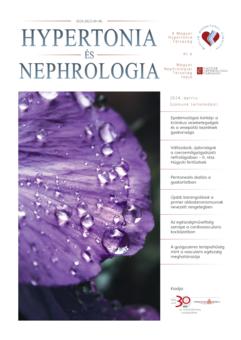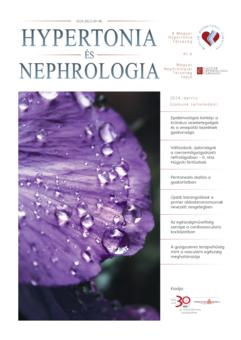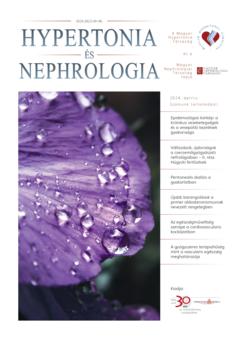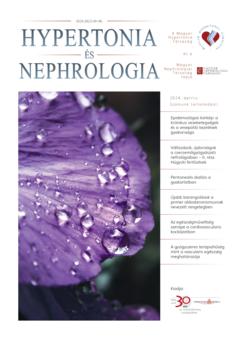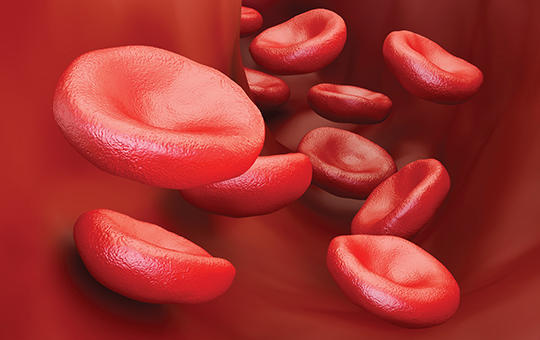The eLitMed.hu medical portal uses computer cookies for convenient operation. Detailed information can be found in the Cookie-policy.
Advanced search
You can set up what time period, journal, and metadata to search.
Number of hits: 10934
[Changes/new developments in pediatric nephrology II.]
[In infancy, febrile urinary tract infection is common. Its symptoms are often poor. If treatment is started in time, recovery is usually quick, and the chance of kidney damage is minimal.]
[Effect of rilmenidine therapy on heart rate- and blood pressure variability as well as baroreceptor sensitivity]
[The sympathetic nervous system plays an important and widely investigated role in the pathogenesis of the hypertension and its concomitant diseases.]
[ACCREDITED TRAINING]
[Dear Reader! By passing the test you can earn 20 accreditation points. You can send your answers electronically (https://elitmed.hu/tovabbkepzesek or by e-mail: [email protected]), providing the data required for registration (name - if the name used officially is not the same as your name at birth, please also provide your name at birth -, place of work, medical seal number, place and date of birth, mother's maiden name). In the e-mail sent, after the registration data, you must indicate the 24HNAT symbol, the question number and the letter of the correct answer. Acceptance period: 1 April - 15 May 2024.]
[Analysis of the antihypertensive effect of the antihypertensive rilmenidine]
[The most recent national (MHT 2018) and the latest European guidelines (ESH 2023) (1, 2), diuretics, the calcium antagonists, ACE inhibitors, ARBs, α1-adren- noceptor blockers and ß-blockers, the so-called "centrally acting" imidazoline (I)-1 receptor agonists were also mentioned.]
[Drug interactions in the elderly, the challenges of combined drug treatment, Beers-list ]
[Drug therapy is one of the basic and often used methods of evidence-based medicine however with its multiplied challenges. Patients respond differently to medications. Moreover, the likelihood of adverse effects is not the same in all patients. One of the reasons for these phenomenon is the old age. The body composition is changing, comorbidities appear, the pharmacodynamics and pharmacokinetics of drugs are also changing, the patients’ compensatory mechanisms and cognitive abilities deteriorate, the immune system may be weakened and the patients’ compliance with therapy may decrease. Keeping all these in mind, drug treatment requires a complex approach, thus it needs close cooperation of doctors, pharmacists, and patients or their relatives. Close follow-up, individual medication, detailed written medication instructions improve the patient's adherence to therapy. Overprescribing is common for older patients because of their polymorbidities. Thus, it is important to be aware of drug interactions, to know the sources of describing interactions (e.g. Beers-list). We can now take advantage also of software guidance to set the right medication. In order to optimize the treatment, it is important to report all observed adverse effects to the authorities, since this way, the new knowledge can be inserted to the product information. ]
[Menorrhagia associated with anticoagulant treatment of young thromboembolic female patients ]
[Venous thromboembolism can occur also at young age and needs long-term anticoagulant treatment in specific cases. However, young women on anticoagulant therapy face special problems. One of the most common ones is an increasing and often heavy menstrual bleeding, which may result in anaemia. All anticoagulants can provoke menorrhagia and according to the available evidence, it is mostly associated with administration of activated factor X-inhibitors. Its management requires cooperation of gynaecologists and haematologists. Most cases are well controlled by adjusting the anticoagulant therapy, using hormonal therapy orally or via intrauterine device or administration of antifibrinolytic agents. However, some cases require surgical treatment. While caring for these patients, it is essential to explore the problem by taking accurate history and adequate laboratory tests, to modify the treatment and supplement the loss of iron alleviating this way the symptoms and improving the patient’s quality of life as well. ]
[Medical and the life history models in clinical psychology ]
[This study presents the dual nature of the classical medical and the more flexible life history model of mental disorders in the last almost two hundred years of psychological way of thinking. One way of basic interpretations considers the mental disorders as an outcome of any kind of disturbed biological functions. Within this classification, some considerations – according to Rokitansky’s pathological doctrine – couple the mental disorders to the disorders of specific anatomical brain structures. The other way of interpretation complies with Claude Bernard’s ideas, thus mental disorders are of regulatory origin. In our days there were emerging strong evolutionary and neurobiological understandings in the biological mental pathology and the key issue is their interrelation. The other way of traditional interpreting mental disorders starts from life history and the constant interpretive work of humans. Our symptoms are based on special meaning and valance having attributed to life events. As a mainstream in this regard, this study presents the works of Sigmund Freud and Karl Jaspers. The conclusion is that biological ad life history interpretations must cooperate for understanding of mental disorders. ]
[Artificial intelligence in life science education: opportunities and risks ]
[This study concerns the development of artificial intelligence and deep learning from the perspective of applications in medical and life sciences. It highlights that the increasing amount of health data and advances in computing technology have facilitated the spread of artificial intelligence in medicine and it is now part of the day-to-day medical practice. Artificial intelligence has proven to be an effective tool in medical diagnostics, such as imaging and patient care, improving diagnostic accuracy and efficiency. The rapidly growing medical knowledge and the need to apply new technologies make it essential to integrate artificial intelligence into the whole system of life science education. Artificial intelligence can assist in career pick, choosing of specialization, and the entire educational process (acquisition of knowledge and skills development), including personalized forms of assessment. This study draws also attention to the ethical issues and challenges related to the use of artificial intelligence in health education. ]
[Post-stroke spasticity – What to do with it? ]
[The aim of this review is to raise awareness of spasticity in primary care and outpatient settings, since we can provide this way coordinated support to those affected. As the pathomechanism of spasticity is not cleared in all details, the choice of right treatment modalities with different levels of evidence is challenging not only for GPs but also for neurologists and rehabilitation specialists. Poststroke spasticity (PSS) should be considered as a chronic condition that needs continuous follow-up and care. Its therapeutic principles have changed over the last decade. Complex care consists of interdependent elements and only the right use of which provides a better quality of life. These elements are available in Hungary too, but more organised and conscious care should be applied. Primary care workers (doctors, medical assistants, physiotherapists, caregivers, nurses) play an important role in recognising spasticity itself and its negative impact on bodily functions, and in identifying and treating the underlying causes that increase spasticity, most of which are well manageable. Many therapeutic options of complex spasticity could be delegated to the GPs, but in the current funding system, GPs should rather be involved in recognition and choosing the patients’ right pathway. Spasticity is a very common consequence of many diseases, which affect the central nervous system, including the high stroke prevalence too. Thus, it is reasonable that as many as possible professional teams be able to recognise and treat spasticity, and refer it if needed to a centre where more experience and wider therapeutic spectrum are available. Further, it is necessary to increase the number and competence of these centres by regular professional trainings.]
1.
Clinical Neuroscience
[Headache registry in Szeged: Experiences regarding to migraine patients]2.
Clinical Neuroscience
[The new target population of stroke awareness campaign: Kindergarten students ]3.
Clinical Neuroscience
Is there any difference in mortality rates of atrial fibrillation detected before or after ischemic stroke?4.
Clinical Neuroscience
Factors influencing the level of stigma in Parkinson’s disease in western Turkey5.
Clinical Neuroscience
[The effects of demographic and clinical factors on the severity of poststroke aphasia]1.
2.
Clinical Oncology
[Pancreatic cancer: ESMO Clinical Practice Guideline for diagnosis, treatment and follow-up]3.
Clinical Oncology
[Pharmacovigilance landscape – Lessons from the past and opportunities for future]4.
5.
